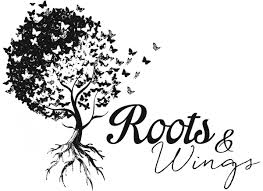I like the phrase “roots and wings” when it comes to describing genealogy. With every family tree, there are the welcome new additions as more roots sprout to support those who have earned their wings and flown from the nest. In my case, it’s the Jerry Banister Family tree that keeps me busy accounting for all these comings and goings. It’s a tedious process trying to distinguish who’s who, so thankfully I have help. People that have been working on the Ban(n)ister lineage for 30 or more years have indicated that the family was often times not very creative in naming their children. As a result, there are too many first names of William and James to properly identify one Banister from another.
I’m a newcomer in “Banister World,” and trying to play catch-up from being a Johnston for most of my life. However, thanks to modern day DNA technology, the story of my birth and subsequent adoption is becoming less murky. I am clearly genetically linked to Charles B. Bannister (1875-1940) and his brother Henry Otis Banister (1879-1921). They would both be considered to be my great, great, grandfathers. Charles B. links to Cecil Ralph Banister through his son Arlie Adam, while brother Henry connects with Ivan Otis and daughter Edna Faye. If my family math is accurate, this would make Edna and Cecil third cousins at the time when I was “accidentally” conceived.
To be quite honest, as an adopted child I never paid much attention to inner family relationships. For the record, the genetic risk associated with second cousins having children is almost as small as it would be between two unrelated individuals, let alone third cousins. Consequently, this does not account for any of the “drain bramage” that some of you may associate with my bazaar behavior. However, considering presumed misaligned heath concerns, marriage between first cousins is legal in only about half of American states. Just out of curiosity, I copied this explanation from The Spruce:
What Is a Cousin?
There are many degrees and types of cousins. While first cousins are close relatives, second and third cousins are not. Here are a few definitions:
- a first cousin: the child of your aunt or uncle (your parent’s sibling’s child) is your first cousin
- a second cousin: the child of your parent’s cousin is your second cousin
- a cousin once (or twice) removed: a cousin separated by a generation (for example, your parent’s cousin is your cousin once removed)
- third cousin: the children of your parent’s second cousin
The chances are that you know and spend time with your first cousins. You may happen to know your second cousins. But unless you have a particularly large and close family, you may never have met third or fourth cousins or cousins who are once or twice removed. In the case of Indiana where I was born, first cousins once removed can be married only if they are over a certain age or cannot bear children. With regard to my inferred birth parents, they could have gotten married, but that’s not what happened.
All this aside, I made a few new discoveries on the Ancestry.com Jerry Banister Family tree this past week that further solidify my place in “Banister World.” Another first cousin connection on Cecil Ralph’s side of the family was revealed (shared DNA: 1,109 cM across 38 segments). This is now my #2 connection overall – the niece of my #1 match (shared DNA: 1,719 cM across 40 segments). My #3 connection, also a first cousin (shared DNA: 991 cM across 41 segments), according to the scientific charts, is linked to Edna Faye’s direct family – her niece. This is as close as I have come to confirming their presumed relationship that led to my birth. Adoption records definitely show her to be the mother, with only bits and pieces about the father. She is still alive but continues to deny what all this science can supposedly prove.
In addition, I added four more DNA relatives to my growing tree of 12,308 “members.” Some are Angels and some are Roots, but all have one thing in common – a distant connection to Laborn Banister (1801-1885). Experts have not yet found evidence of his father that some believe to be Burrel (1779-1837). This is where too many William Banister, Bannister, and even Banester identities destroyed the trail. Also, sometimes the only clue that people were related is the fact that they are buried next to each other. It’s easy to add someone else’s speculations to your family tree, but only a true professional genealogist seeks the factual details that lead to the truth.
My detective work this week also uncovered connections for second cousins, Ava Hope Simpson Crossfield Alama (shared DNA: 229 cM across 15 segments) and Gladys Marie Brooks Eikenbary (shared DNA: 221 cM across 13 segments), both falling in my Top 13 Ancestry matches. There is now a growing cluster of these folks that are related to me through the twisted Cecil Ralph branches.
As I was raised by my adoptive parents (my only true parents), I was introduced to my cousins. However, I’m not sure I really understood what a cousin was with respect to blood lines. To this day, they are still my cousins that continue to share of life-long bond of familiarity. All of my new DNA cousins might involve a natural connection but there is little of life in common. Regardless, it’s been a fulfilling experience to meet and talk with others interested in the fascinating Banister history of Angels and Roots.

Leave a Reply